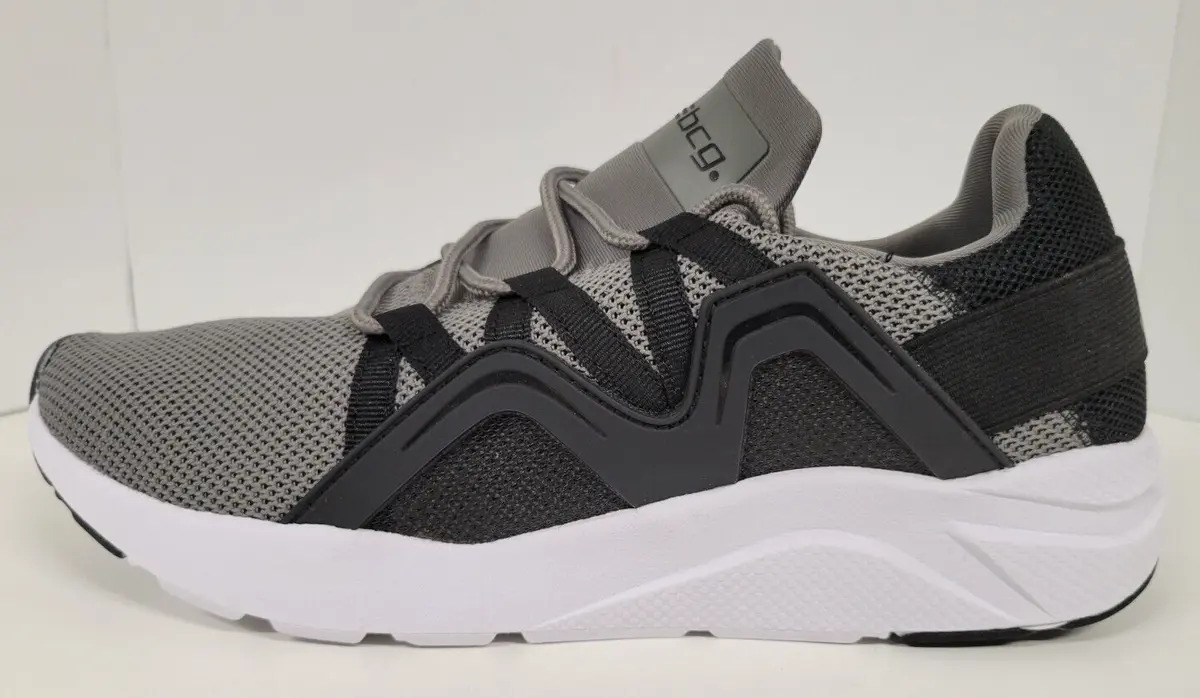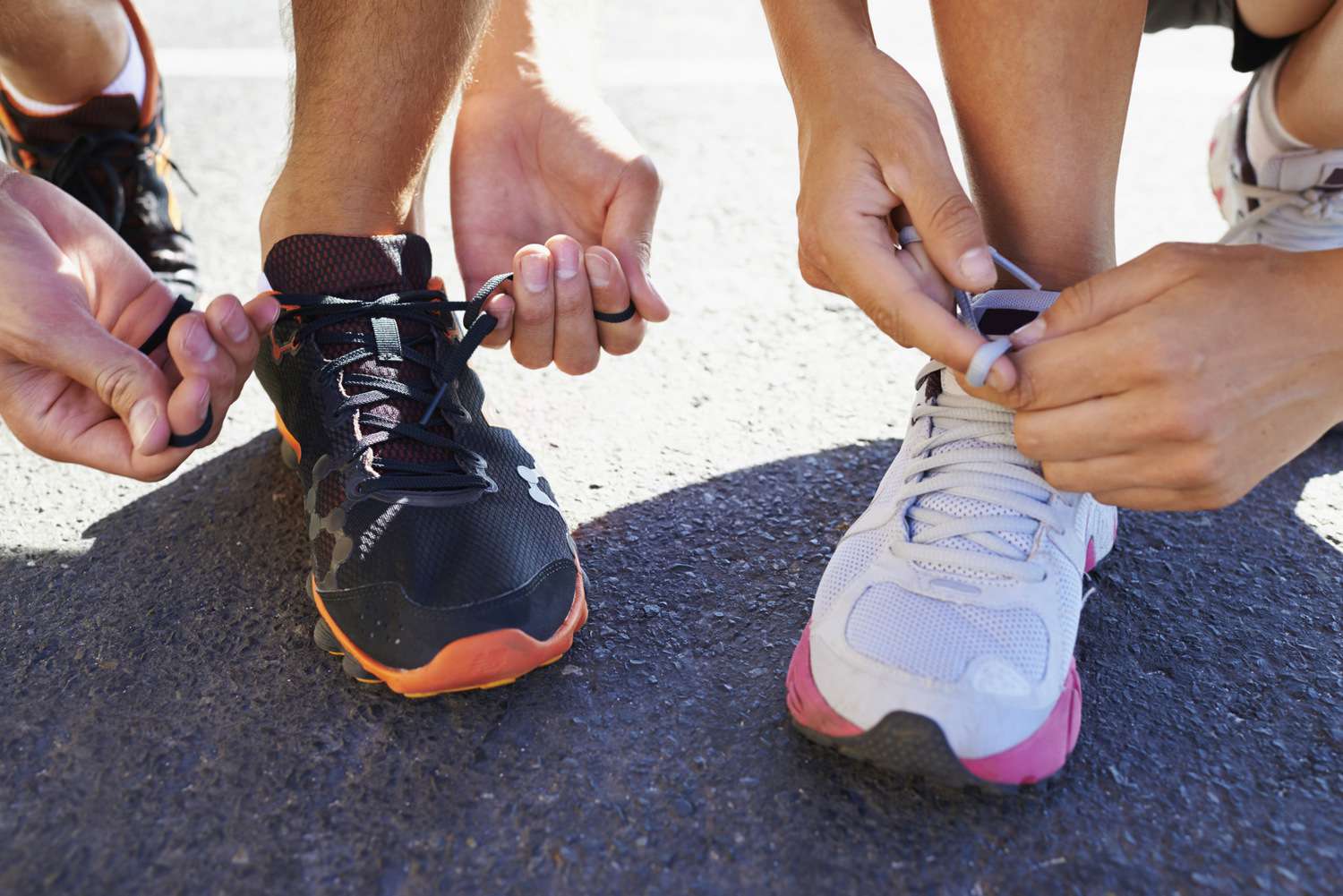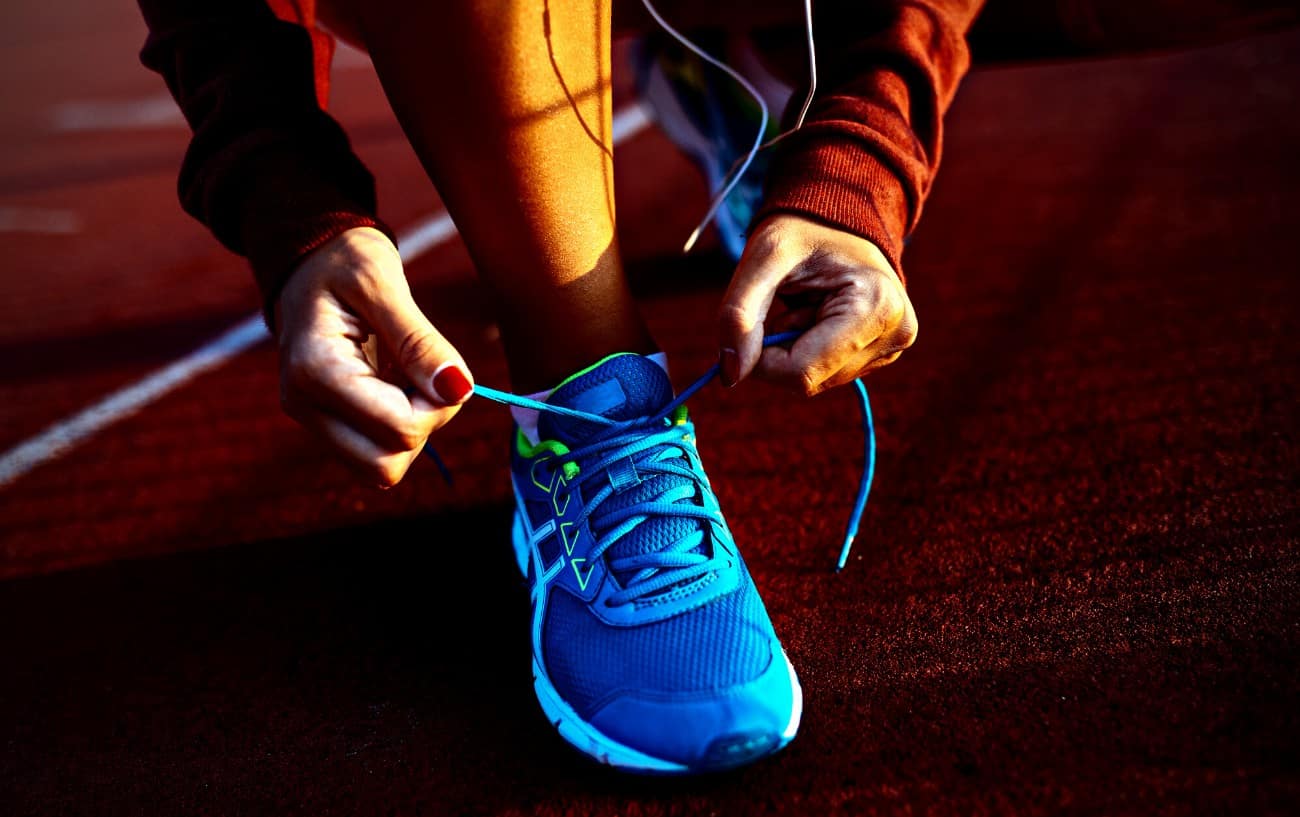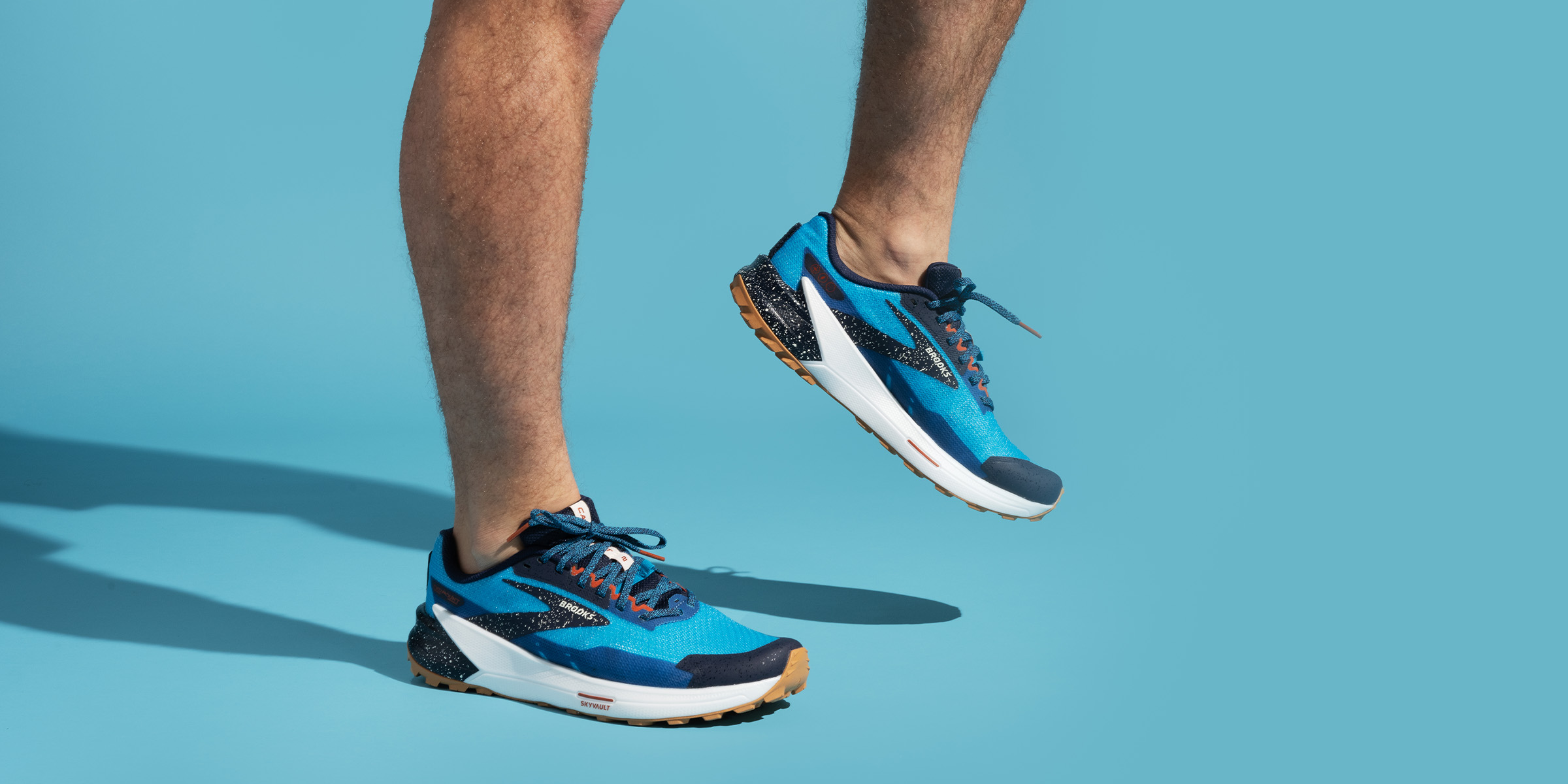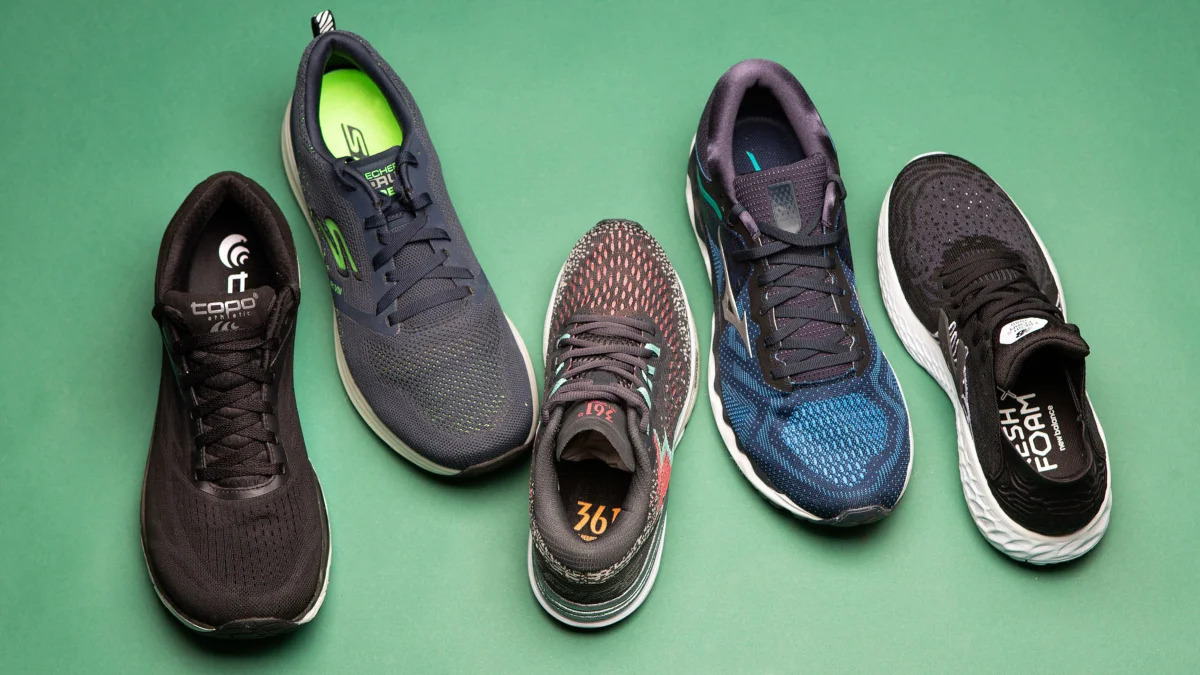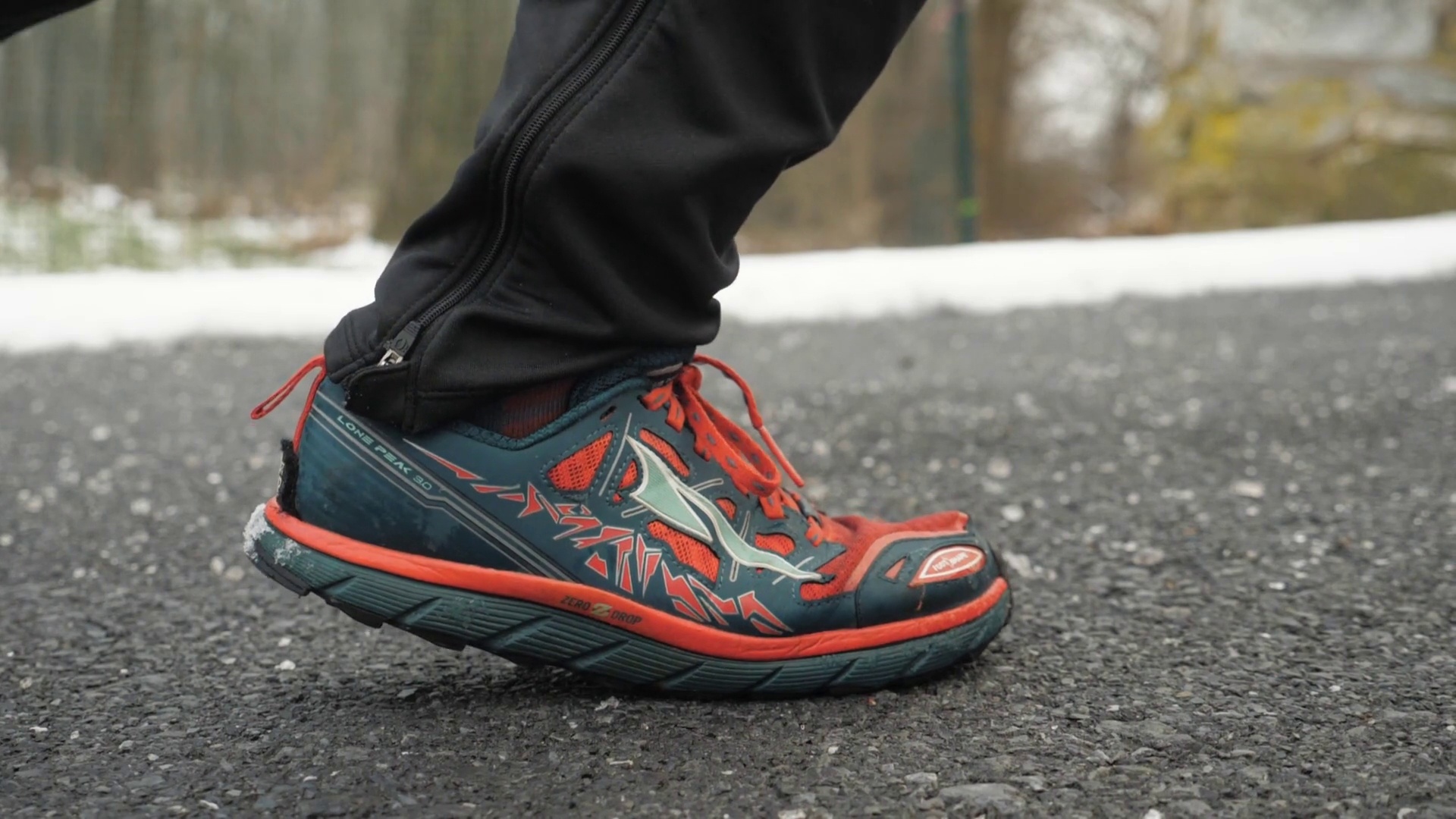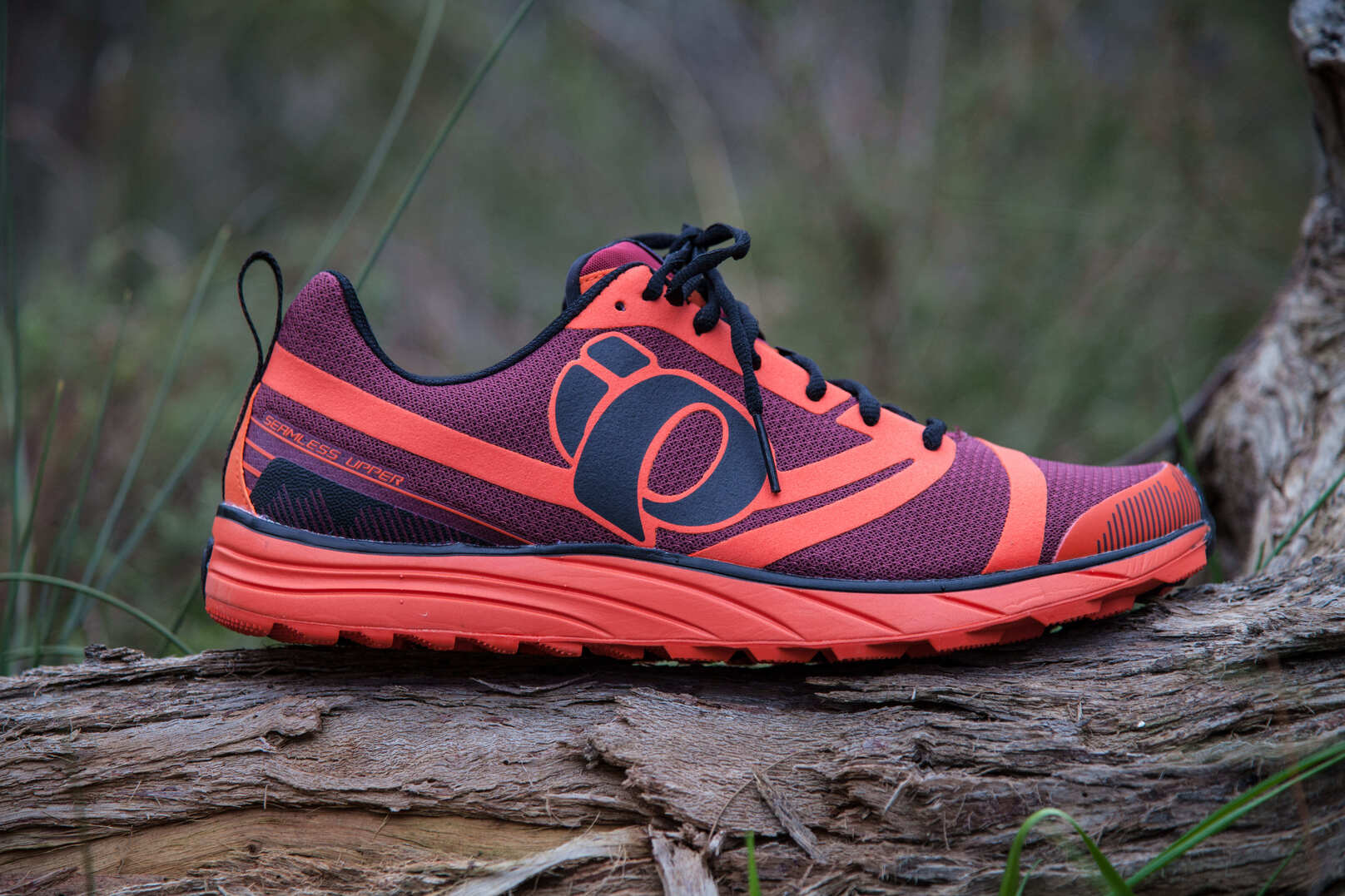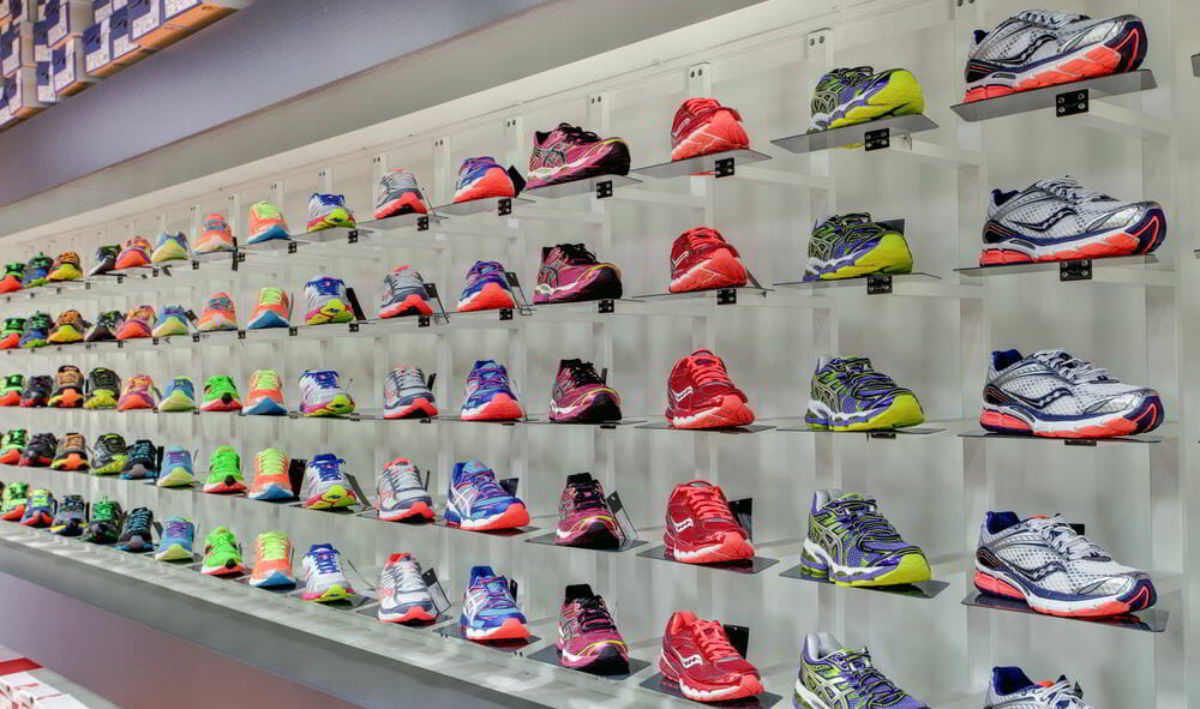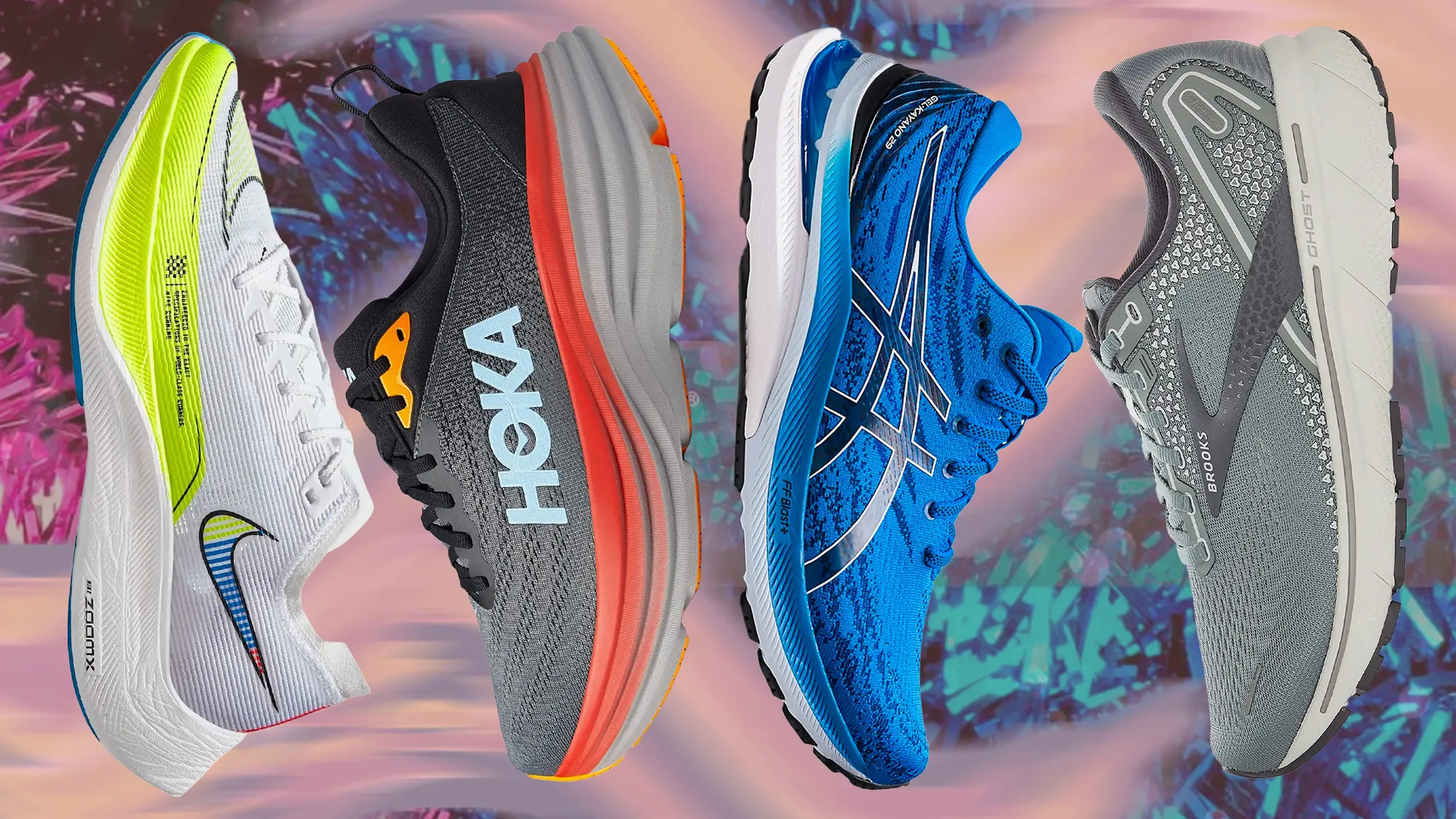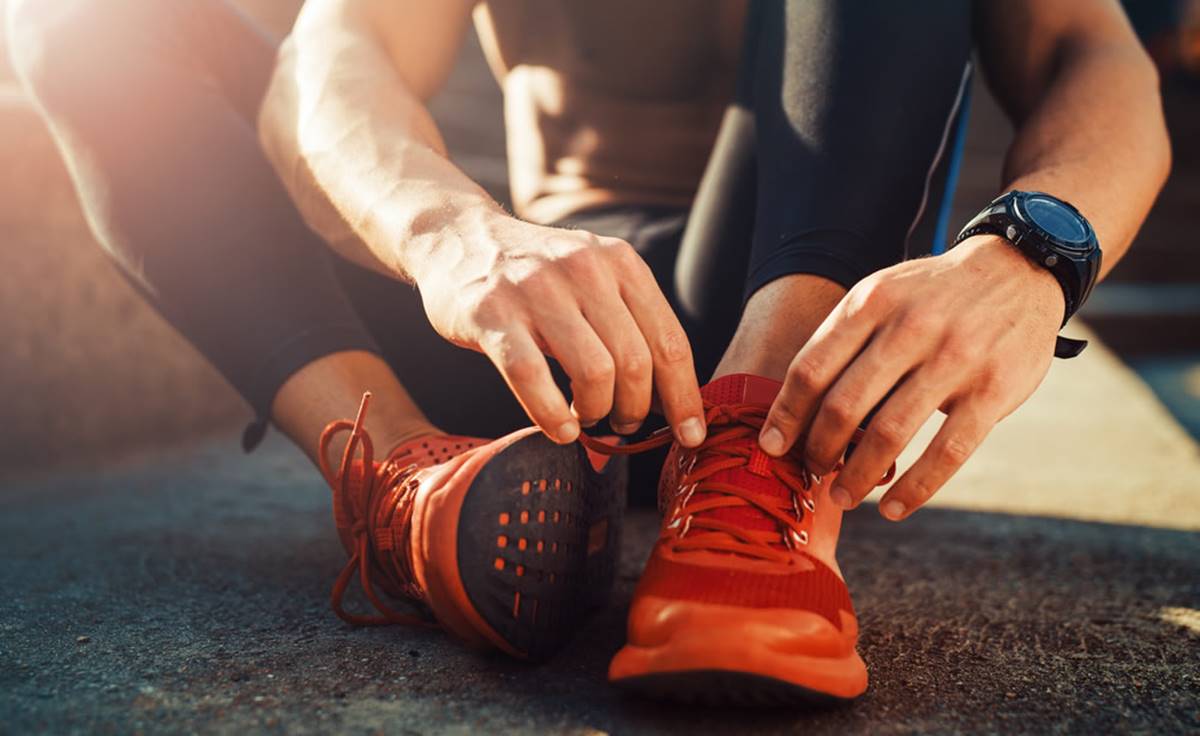

Featured
How To Choose Trail-Running Shoes
Modified: October 3, 2023
Looking for the best trail running shoe? Discover our top picks and expert tips to find the perfect fit and support with featured options.
Introduction
When it comes to trail running, having the right pair of shoes can make a world of difference. Trail running shoes are specifically designed to handle the challenges of off-road terrain, providing the necessary stability, protection, and traction to keep you moving confidently and comfortably. However, with so many options available on the market, choosing the right trail running shoe can be a daunting task.
In this article, we will guide you through the key factors to consider when selecting a trail running shoe. By understanding your foot type, analyzing your gait, and evaluating the shoe’s features, you will be able to find the perfect fit for your trail running adventures.
Before diving into the specifics, it’s important to note that no single shoe is perfect for every trail runner. Each person’s foot anatomy, running style, and trail preferences are unique, so what works for one person may not work for another. It’s essential to find a shoe that suits your individual needs and preferences, offering a balance of comfort, protection, and performance.
In the following sections, we will discuss the various factors to consider when choosing a trail running shoe, including foot type and gait analysis, cushioning and protection, traction and grip, fit and comfort, stability and support, durability and materials, weight and flexibility, breathability and ventilation, as well as price and budget considerations.
By taking all of these factors into account, you can make an informed decision and find a trail running shoe that will support you in reaching new heights on the trails.
Foot Type and Gait Analysis
One of the first things to consider when choosing a trail running shoe is your foot type and gait. Every individual has a unique foot structure, including factors such as arch height, pronation, and supination. Understanding these characteristics can help you select a shoe that provides the necessary support and stability for your feet.
To determine your foot type, you can perform a simple wet test. Wet your foot and step onto a surface that will leave a visible footprint, such as a piece of paper or a dry floor. Based on the shape of the print, you can determine your arch height:
- Low arch (flat feet): If your footprint shows almost the entire sole of your foot, you likely have a low arch. This foot type tends to overpronate, meaning the foot rolls inward excessively during the gait cycle.
- Normal arch: If your footprint shows a moderate curve along the inside of your foot, you have a normal arch. This foot type typically has a neutral pronation, with a natural inward roll of the foot during the gait cycle.
- High arch: If your footprint shows a distinct curve along the inside of your foot, with a noticeable gap between the heel and the ball of the foot, you have a high arch. This foot type often supinates, meaning the foot rolls outward during the gait cycle.
Once you have identified your foot type, it’s important to analyze your gait, or the way you walk and run. This can be done through a gait analysis, which can be conducted by a professional at a specialty running store or by recording yourself while running on a treadmill.
Gait analysis helps identify any abnormalities or imbalances in your stride, such as overpronation, underpronation (supination), or a neutral gait. This information can guide you in selecting a shoe that offers the appropriate level of support and stability.
For individuals with a low arch and overpronation, stability or motion control shoes are recommended. These shoes feature additional support features to control pronation and stabilize the foot. On the other hand, those with a high arch and supination should opt for neutral or cushioned shoes, which provide ample cushioning to absorb impact and promote a more natural foot motion.
For runners with a normal arch and neutral gait, a wide range of shoe types can be suitable. It’s important to choose a shoe that feels comfortable and supportive, taking into consideration other factors such as cushioning, traction, and durability.
By understanding your foot type and analyzing your gait, you can select a trail running shoe that promotes proper alignment, reduces the risk of injury, and enhances your overall running experience on the trails.
Cushioning and Protection
When traversing rugged trails, having sufficient cushioning and protection in your trail running shoes is essential. The right amount of cushioning can provide comfort and shock absorption, reducing the impact on your joints and minimizing the risk of injuries.
The level of cushioning you require depends on various factors, including your body weight, running style, and personal preference. Some runners prefer a more minimalistic feel with less cushioning, while others prefer maximum cushioning for added support and comfort.
Trail running shoes generally offer three types of cushioning: minimal, moderate, and maximum. Minimal cushioning focuses on providing a lightweight and responsive feel, allowing for better ground feel and agility. However, this type of cushioning may not be suitable for long distances or runners who require more impact protection.
Moderate cushioning strikes a balance between weight and protection. It offers cushioning to absorb shock while still allowing for a connected feel to the ground. This level of cushioning is ideal for most trail runners who want a versatile shoe for various terrains and distances.
Maximum cushioning is designed for runners who prioritize comfort and plushness. These shoes have ample cushioning throughout the entire shoe, providing exceptional shock absorption and a cushioned ride. They are typically beneficial for runners with a heavier body weight or those who need extensive support.
In addition to cushioning, the level of protection offered by the shoe is crucial. Trail running shoes should protect your feet from sharp rocks, roots, and other trail hazards. Look for shoes with features like reinforced toe caps, rock plates, and durable outsoles that provide excellent underfoot protection.
Consider the type of terrain you will be running on, as well. If you frequently encounter technical, rocky trails, a shoe with enhanced protection is essential. However, if you primarily run on smoother, less technical trails, a shoe with lighter protection may suffice.
Ultimately, finding the right balance of cushioning and protection is crucial to ensure a comfortable and injury-free trail running experience. Consider your personal needs, the type of trails you will be running on, and your preference for cushioning levels to make an informed decision.
Traction and Grip
Trail running involves traversing a variety of terrains, including muddy paths, rocky trails, slippery surfaces, and steep inclines. Having reliable traction and grip in your trail running shoes is essential to maintain stability and prevent slips and falls.
When considering traction, look for a shoe with a lugged outsole. Lugs are the protrusions on the sole of the shoe that provide grip and traction on different surfaces. The depth and pattern of the lugs will vary depending on the intended use of the shoe.
For muddy and loose terrain, shoes with deeper, widely spaced lugs are recommended. These lugs dig into the ground, providing excellent grip and preventing the accumulation of mud and debris. On the other hand, for hard-packed trails and rocky surfaces, shoes with shallower, multi-directional lugs offer better traction and maneuverability.
Additionally, the outsole material plays a role in traction. Look for shoes with sticky rubber compounds that offer superior grip on wet and slippery surfaces. These rubber compounds provide increased traction, allowing you to confidently navigate through challenging terrain.
It’s also important to consider the shoe’s ability to provide grip on wet surfaces. Look for shoes with water-resistant or waterproof properties to prevent water from seeping into the shoe and reducing traction. Some shoes may also have specific features like drainage ports to allow water to escape, keeping your feet dry and enhancing traction on wet trails.
When testing the traction and grip of a shoe, pay attention to how the shoe performs on different surfaces. Take the shoes for a test run on various terrains to assess their ability to grip and provide stability. This way, you can determine if they offer the traction necessary for your specific trail running needs.
Having reliable traction and grip in your trail running shoes not only enhances your performance but also reduces the risk of slips, falls, and potential injuries. Invest in a shoe that offers excellent traction for the type of trails you’ll encounter, ensuring a safe and enjoyable trail running experience.
Fit and Comfort
When it comes to trail running, finding a shoe that offers a proper fit and overall comfort is crucial. Ill-fitting or uncomfortable shoes can lead to discomfort, blisters, and even injuries. Therefore, it’s important to prioritize fit and comfort when selecting a trail running shoe.
The fit of a trail running shoe is determined by the width, length, and overall shape of the shoe. Every brand and model may provide a slightly different fit, so it’s essential to try on different options to find the one that suits your foot shape and size.
When trying on trail running shoes, make sure you have enough space in the toe box. Your toes should be able to wiggle comfortably without feeling restricted. A snug fit around the midfoot is important to provide stability and prevent slippage during the run. However, ensure that the shoe is not too tight as it can cause discomfort or restrict blood flow.
Consider the type of socks you will be wearing while trail running. If you typically wear thicker socks, make sure to try on the shoes with those socks to ensure a proper fit. Take note of any pressure points or areas of discomfort, as they may indicate that the shoe is not the right fit for your foot.
In terms of overall comfort, look for shoes that offer ample cushioning and support. The midsole of the shoe should provide sufficient shock absorption to reduce the impact on your feet and joints. The upper material of the shoe should be breathable to enhance ventilation and keep your feet cool and dry during long runs.
Some trail running shoes may also feature additional comfort-enhancing technologies, such as gaiters or padded collars to prevent debris from entering the shoe or provide extra cushioning around the ankle area.
It’s important to note that everyone’s feet are unique, and what may be comfortable for one person may not be for another. Listen to your body and pay attention to any discomfort or pain while trying on or testing out trail running shoes.
Overall, finding a trail running shoe that offers a proper fit and high level of comfort is essential for an enjoyable and injury-free trail running experience. Take the time to try on different models, consider your foot shape and size, and prioritize shoes that provide the necessary cushioning and support for your individual needs.
Stability and Support
When you’re out on the trails, it’s important to have a trail running shoe that offers stability and support. The uneven terrain and unpredictable surfaces can put strain on your feet and ankles, making it crucial to choose a shoe that helps prevent excessive rolling and provides the necessary support for a stable running experience.
One of the key factors that contribute to stability is the shoe’s overall design and construction. Look for shoes with a wider base and a firm midsole that helps distribute weight evenly and minimize pronation or supination. These stability features can help reduce the risk of ankle injuries and provide a more confident stride.
Another aspect to consider is the shoe’s heel counter. The heel counter is the back portion of the shoe that supports the rear of your foot. A rigid or semi-rigid heel counter helps provide stability and prevents excessive motion, especially during trail descents or uneven terrain.
In addition, some trail running shoes offer specific stability technologies or features. These may include medial posts or stability plates that provide targeted support and control excessive pronation. These features are particularly beneficial for runners with low arches or those who tend to overpronate.
The upper of the shoe can also contribute to stability and support. Look for shoes with a secure and snug fit around the midfoot and heel area. This helps prevent slippage and ensures that your foot stays firmly in place, reducing the risk of instability during runs.
If you have specific stability or support needs due to a previous injury or condition, it may be worth seeking expert advice from a podiatrist or sports medicine professional. They can provide guidance on choosing the right shoe or may recommend custom orthotics to provide additional support based on your individual needs.
Remember, stability and support go hand in hand with a proper fit. It’s important to try on different trail running shoe models, take them for a test run, and ensure they provide the stability and support you require before making your final decision.
By selecting a trail running shoe with the right stability and support features, you can feel confident and secure while navigating challenging terrain and enjoy a stable and comfortable running experience.
Durability and Materials
When it comes to trail running, durability is a key factor to consider in your choice of trail running shoe. The rugged and unpredictable nature of off-road trails can be tough on footwear, so it’s important to select a shoe that is built to withstand the demands of trail running.
The durability of a shoe is determined by the quality of materials used in its construction. Look for shoes made from high-quality synthetic materials or a combination of synthetic and mesh fabrics. These materials are typically more resistant to abrasion, tearing, and water damage compared to traditional leather.
The outsole of the shoe is also an essential consideration when it comes to durability. Look for shoes with a durable rubber outsole that provides excellent traction and can withstand the wear and tear of trail running. Some trail running shoes may have specific outsole materials or patterns that enhance durability and grip on challenging terrains.
Seam reinforcement is another factor to look for in a durable trail running shoe. Shoes with reinforced seams, especially in high-stress areas, such as the toe box or midfoot, can provide added durability and prolong the lifespan of the shoe.
Water resistance is also an important aspect, especially if you plan to run in wet conditions or encounter streams or shallow water crossings. Look for shoes with water-resistant or waterproof features to help keep your feet dry and protect the shoe’s materials from damage. Keep in mind that no shoe is entirely waterproof, and some sacrifice breathability for water resistance.
It’s important to note that while durability is a desirable trait, it often comes with a trade-off in terms of weight. Shoes with more robust materials and construction may be slightly heavier than those designed with lightweight materials. Finding the right balance between durability and weight depends on your personal preferences and the specific demands of your trail running adventures.
One way to determine the durability of a shoe is by reading reviews from other trail runners who have tested the shoes on various terrains and distances. Their experiences can provide valuable insights into the long-term durability of a shoe.
Remember that proper care and maintenance can also contribute to the durability of your trail running shoes. Regularly clean your shoes, remove dirt and debris, and allow them to dry properly to prevent the accumulation of moisture that can lead to premature wear and deterioration.
By considering the durability of materials, construction, and overall design, you can make an informed decision and select a trail running shoe that is built to withstand the challenges of off-road running and provide long-lasting performance.
Weight and Flexibility
The weight and flexibility of a trail running shoe are important considerations when selecting the right pair for your running adventures. These factors can affect your speed, agility, and overall comfort on the trails.
Weight plays a significant role in how easily you can move and maneuver on the trails. Lighter shoes generally allow for faster and more efficient running, making them ideal for runners who prioritize speed and agility. They can help reduce fatigue and make uphill climbs or technical sections more manageable.
On the other hand, shoes with a slightly higher weight often provide more heel cushioning, stability, and protection. These shoes may be suitable for those who prioritize comfort and durability over all-out speed. It’s important to find the right balance between weight and performance, considering your specific needs and preferences.
Flexibility is another important factor to consider. A shoe with appropriate flexibility allows for natural foot movement and a more efficient stride. This can enhance your overall running performance by enabling better ground feel and a smoother transition from heel to toe during your stride. A flexible shoe also adapts to uneven terrain, allowing your foot to conform to the curves and bumps of the trail.
However, it’s crucial to find a balance between flexibility and stability. Too much flexibility may compromise stability, especially on rocky or technical trails, while too little flexibility can hinder natural foot movement and cause discomfort during long runs.
When trying on trail running shoes, pay attention to how they feel on your feet. Flex the shoe gently with your hands to feel its level of flexibility. Walk around and perform some light running movements to assess if the shoe allows your foot to move naturally.
Consider the type of trails you will be running on as well. For technical, rocky, or steep terrains, shoes with a slightly stiffer construction may provide more stability and protection. On the other hand, for smoother or more gentle trails, shoes with increased flexibility may be preferred.
Ultimately, the weight and flexibility of a trail running shoe come down to personal preference and the type of running you enjoy. Try on different models, consider the level of cushioning, stability features, and protection offered by the shoe while keeping your running goals and trail preferences in mind.
By finding the right balance between weight and flexibility, you can choose a trail running shoe that suits your running style and allows you to perform at your best on the trails.
Breathability and Ventilation
When tackling the trails, keeping your feet cool and dry is essential for a comfortable and enjoyable running experience. That’s where the breathability and ventilation of your trail running shoes come into play.
Trail running often involves running in warm and humid conditions, and your feet can sweat profusely during these intense workouts. Shoes with good breathability and ventilation help to wick away moisture and promote airflow, preventing your feet from becoming hot, clammy, and uncomfortable.
When considering the breathability of a shoe, pay attention to the upper material. Look for shoes made with mesh or lightweight fabrics that allow for maximum airflow. These materials are designed to allow air to circulate through the shoe, cooling your feet and preventing the buildup of heat and moisture inside the shoe.
Shoes with breathable uppers can also help to prevent the development of blisters and hot spots, as excess moisture is quickly evaporated and friction is reduced.
In addition to the upper material, other design features can enhance ventilation. Look for shoes with perforations or mesh panels strategically placed in areas where your feet tend to get the hottest, such as the toe box or along the sides. These openings allow fresh air to enter the shoe while expelling warm, moist air.
Another factor to consider is the shoe’s inner lining. Look for shoes with moisture-wicking and quick-drying properties to keep your feet dry and comfortable throughout your run. Some shoe models may also have antimicrobial treatments that help to prevent odors and keep your shoes fresher for longer periods between washes.
It’s important to note that while breathability is desirable, it may come at the expense of water resistance. Highly breathable shoes may not be as water-resistant or waterproof, so consider the conditions you typically run in and choose a shoe that strikes the right balance between breathability and protection.
As you try on different trail running shoes, pay attention to how they feel on your feet in terms of ventilation. If possible, take them for a test run to assess how well they allow airflow and manage moisture.
By choosing a trail running shoe with excellent breathability and ventilation, you can keep your feet cool, dry, and comfortable, even during the most demanding trail runs. This can significantly enhance your performance and overall enjoyment on the trails.
Price and Budget Considerations
When selecting a trail running shoe, price and budget considerations are important factors to keep in mind. Trail running shoes come in a wide range of prices, and finding the right balance between cost and quality is key.
It’s important to establish a budget before beginning your search for a trail running shoe. Determine how much you are willing to spend based on your personal financial situation and the value you place on your running gear.
Higher-priced trail running shoes often offer advanced technologies, superior materials, and enhanced features. These shoes may provide better durability, cushioning, and support, along with specialized designs for specific terrain types.
However, it’s important to note that a higher price doesn’t automatically guarantee a better shoe for your needs. Consider your running goals, the types of trails you’ll be tackling, and your specific foot characteristics before deciding which features are essential.
If you’re on a tighter budget, there are still plenty of options available. Many reputable brands offer mid-range trail running shoes that provide a good balance between quality and affordability. These shoes may lack some of the advanced features found in higher-end models but still offer adequate performance and durability for most trail runners.
Consider researching and reading reviews to find shoes that offer the best value for your budget. Look for shoes that consistently receive positive ratings in terms of performance, comfort, and durability within your price range.
It’s also worth keeping an eye out for sales, discounts, and promotions. Many retailers offer end-of-season sales or clearance events where you can find discounted trail running shoes. Online shopping platforms may also provide access to competitive prices and deals.
Lastly, consider the lifespan of the shoe when evaluating its price. While a more expensive shoe may have a higher upfront cost, it may offer better durability, meaning it will last longer and ultimately provide better value in the long run.
Ultimately, the price of a trail running shoe should be considered in relation to its overall performance, durability, and the specific features that are important to you. By establishing a budget and researching your options, you can find a trail running shoe that meets your needs and provides the best value for your investment.
Conclusion
Choosing the right trail running shoe is essential for a comfortable, safe, and enjoyable experience on the trails. By considering factors such as foot type and gait analysis, cushioning and protection, traction and grip, fit and comfort, stability and support, durability and materials, weight and flexibility, breathability and ventilation, as well as price and budget considerations, you can find the perfect shoe that suits your individual needs.
Understanding your foot type and analyzing your gait will help you select a shoe with the appropriate level of support and stability. The right cushioning and protection will absorb shock and keep your feet protected from trail hazards. Traction and grip are crucial for maintaining stability and preventing slips and falls on various terrains. Finding a shoe with the right fit and overall comfort ensures a pleasant running experience without discomfort or blisters.
Stability and support features in a trail running shoe can help prevent injuries, while durability and high-quality materials ensure that your shoes can withstand the demands of off-road running. Considering the weight and flexibility of the shoe allows you to find a balance between agility and necessary support. Lastly, prioritizing breathability and ventilation keeps your feet cool and dry during even the most intense runs.
Price and budget considerations are important, but remember to focus on value rather than solely on cost. Finding shoes that offer the best features and performance within your budget is key.
In conclusion, selecting the right trail running shoe requires a thoughtful analysis of various factors. By considering these factors and choosing a shoe that meets your specific needs, you can enhance your trail running experience and make every run a memorable and enjoyable one.
